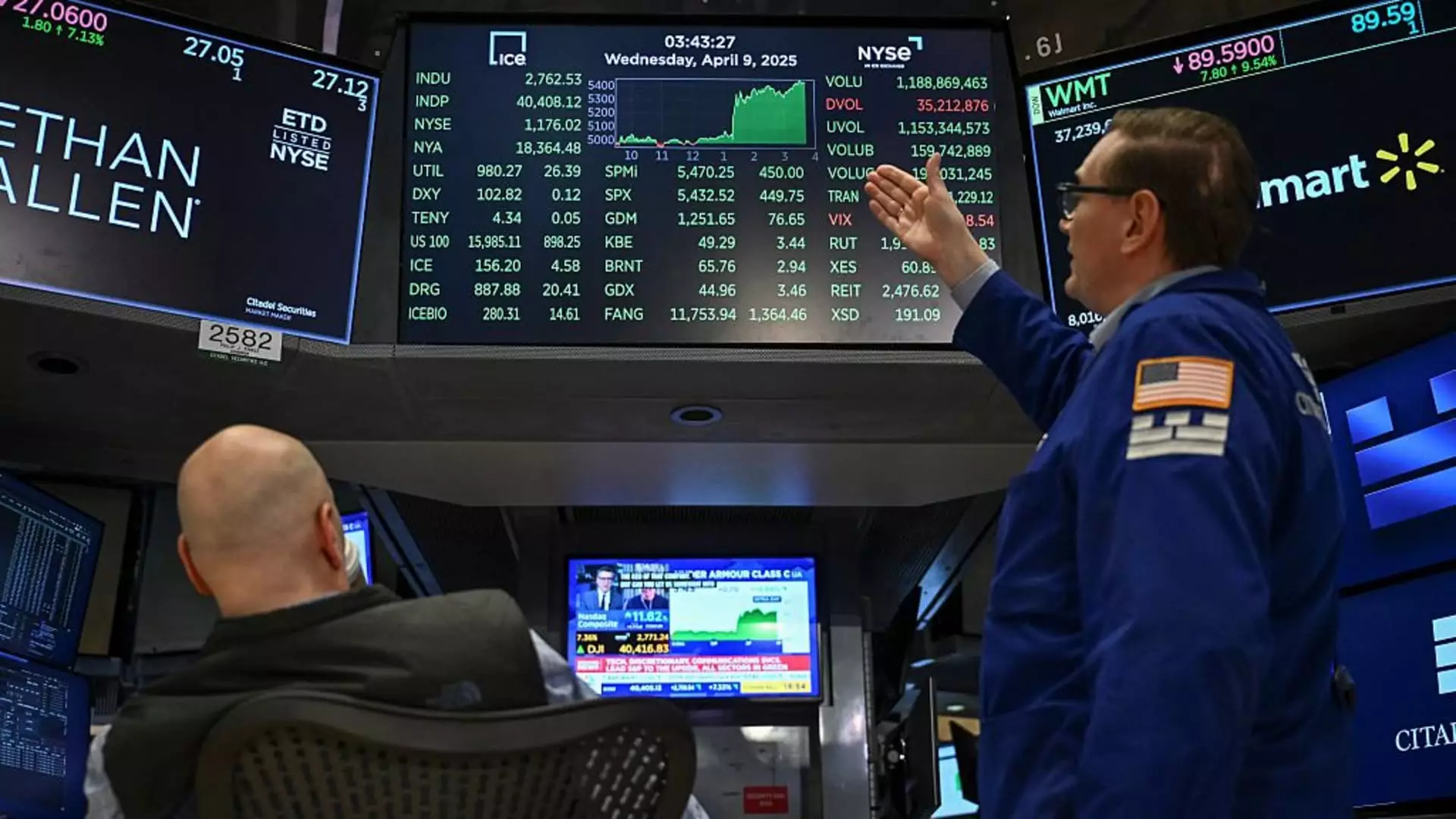The landscape of global investment is undergoing an alarming transition, as highlighted by Rebecca Patterson, the former chief investment strategist at Bridgewater. Investors around the world are reevaluating their stakes in U.S. markets, prompted by rising uncertainties tied to both economic policies and the broader geopolitical climate. This critical shift is not merely an academic discussion; it signifies tangible repercussions for the outlook of the U.S. economy, whose strength has long been buoyed by foreign capital.
Patterson’s insights, shared during her recent appearance on CNBC’s “Fast Money,” paint a stark picture of the situation. Foreign investors, previously enticed by the allure of U.S. assets—which amounted to over $31 trillion last June—are now hesitating. Their concerns aren’t confined to the controversial tariff policies of the Trump administration; they extend to a growing skepticism regarding America’s reliability as a global partner. This sentiment is particularly alarming given the scale of investment involved. A reduction of even a modest 2% could trigger a staggering $1.2 trillion exit from U.S. equities, potentially wreaking havoc on the already beleaguered financial markets.
The Anxiety Behind the Numbers
The figures are compelling: $31 trillion in U.S. assets represents not just a number but an entire global economic ecosystem. This substantial foreign investment surge has historically fueled U.S. stock market booms, propelled by technological advancements and speculative interests in fields like artificial intelligence. However, as Patterson articulates, current anxieties about Washington’s reliability—exacerbated by what some see as the weaponization of capital markets—are making investors second-guess their commitment to American assets.
This shift in perspective is revealing a worrying trend in investor sentiment. Foreign interest is fickle; it’s contingent on a stable, predictable policy environment. The fears expressed by international investors are rooted in a preferable sense of reliability that they are clearly finding lacking in the U.S. As market trends fluctuate, such apprehension has led to discussions among investment committees about reallocating portfolios to trim their U.S. exposure, thus meaningfully impacting the market’s vitality.
Market Repercussions and Risks
While it might seem that an incremental 2% pullback would create negligible disturbance, the implications are significant, echoing through the entirety of the U.S. economy. Patterson notes that even this fractional sell-off could command a 2.3% dip in the S&P 500’s market capitalization. Such an occurrence is not merely theoretical; it poses a logistical nightmare for fund managers who operate under stringent governance and oversight protocols. Decisions of this magnitude require significant deliberation, and the slow bleed of capital out of U.S. markets could create a ripple effect across asset classes.
To compound matters, the current year has already seen U.S. stocks lag behind their overseas counterparts. The S&P is down 4.7% in 2025, while European indices have thrived, suggesting a definitive shift in investor preference away from the U.S. landscape. The emergence of alternatives—whether in emerging markets, cryptocurrencies, or even gold—reveals a growing disinterest in American assets. This diversification trend could threaten the very foundations of U.S. financial supremacy, leading to a diminished role of the dollar in global finance.
The Role of Investor Psychology
Investor sentiment is a powerful force—one that can sway markets dramatically. When uncertainty looms, especially concerning a nation’s fiscal and economic policies, the psychology of the investor takes a severe hit. Patterson astutely emphasizes that the departure from U.S. markets will not happen overnight; rather, it will unfold over months as boards deliberate significant shifts and strategies. The hesitance in commitment indicates a broader psychological trend: investors are busy fortifying their positions in less volatile and more stable markets, and the U.S. is no longer the fortress it once was.
It is a veritable wake-up call for domestic policy makers. Policymaking in an era of global interconnectedness must accommodate the apprehensions of foreign investors who once viewed the U.S. as an unassailable stronghold. Reassessing America’s role and accountability as a trading partner will be imperative in maintaining investor confidence.
In a time marked by economic challenges and shifting global alliances, U.S. leaders must articulate a vision that fosters trust. Anything less could result in a profound recalibration of global capital flows, fundamentally altering the contours of the American financial system as we know it. This is not just about capital leaving; it’s about shaping the future sustainability of the U.S. economy itself.

